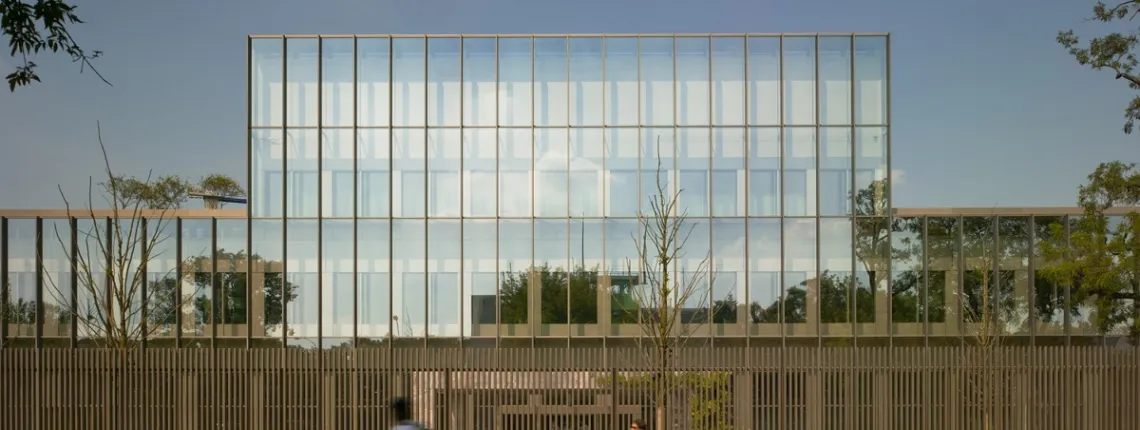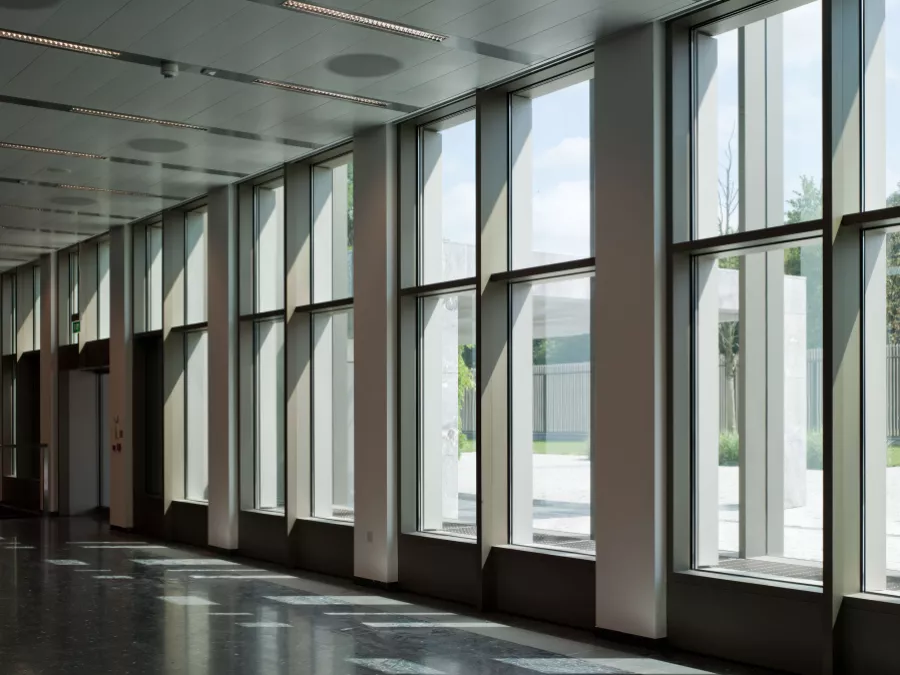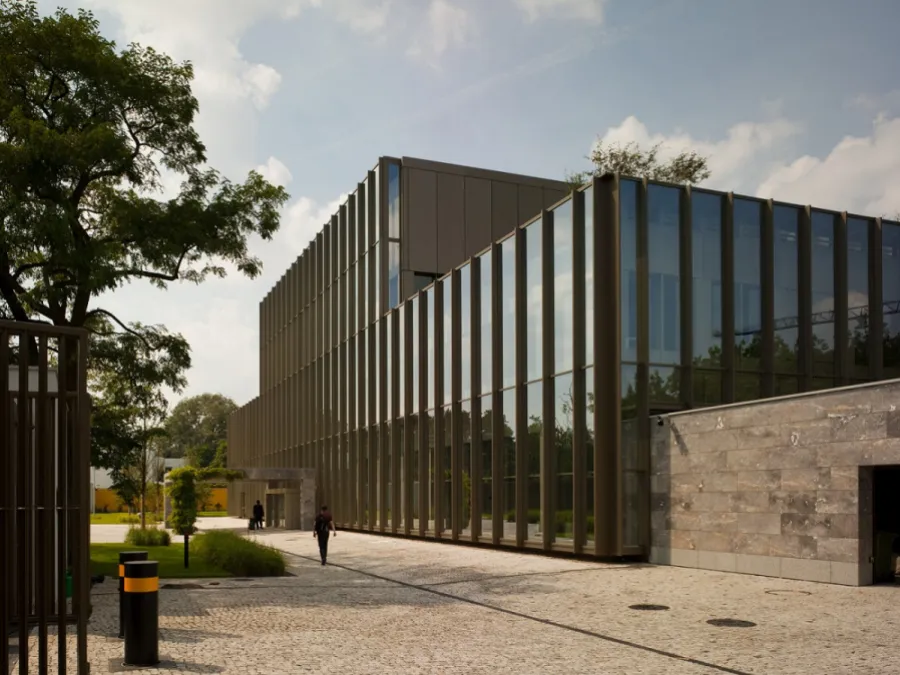Ballistic Glass Installation Tips: Ensuring Maximum Security

Ballistic glass, commonly used in high-risk environments like banks, government buildings, and military facilities, protects against bullets by absorbing and dispersing impact energy. Unlike standard glass, it prevents penetration while maintaining structural integrity.
However, its effectiveness hinges on proper ballistic glass installation. Poor installation can create weak points, compromising safety. Following expert ballistic glass installation tips ensures maximum protection and long-term performance.

What is Ballistic Glass and How is It Different from Regular Glass?
Ballistic glass, also known as bullet-resistant glass, is a specialised safety glazing designed to withstand impacts from high-velocity projectiles. Unlike regular glass, which shatters on impact, ballistic glass slows down and absorbs the projectile’s energy, preventing penetration and minimising damage. While it does not make surfaces entirely bulletproof, it significantly enhances security in high-risk environments.
Materials and Construction
Ballistic glass is built using multiple layers of materials that enhance durability and impact resistance.
-
Laminated Glass: Layers of glass bonded with polyvinyl butyral (PVB) or ethylene-vinyl acetate (EVA) to strengthen the structure.
-
Polycarbonate Layers: Flexible inner layers that absorb and disperse the bullet’s energy, preventing penetration.
The outer layers slow the projectile, while the inner layers flex to absorb residual energy, ensuring structural integrity.
Key Differences Between Ballistic Glass and Regular Glass
Ballistic and regular glass may appear similar at first glance, but their construction and performance in high-risk situations set them apart. While regular glass offers basic protection and aesthetic value, ballistic glass is engineered to withstand impact and provide reliable security. The table below highlights these critical differences:
|
Feature |
Regular Glass |
Ballistic Glass |
|
Material Composition |
Single-layer glass is designed for transparency and aesthetics. |
Multi-layered glass combined with polycarbonate or specialised PVB to withstand impact. |
|
Impact Resistance |
Shatters easily upon impact, posing safety risks. |
Absorbs and disperses kinetic energy, preventing penetration and minimising damage. |
|
Purpose |
Primarily for visibility and basic protection from environmental elements. |
Provides bullet resistance and enhanced security in high-risk environments. |
|
Weight & Thickness |
Lightweight and thin, making it easier to install. |
Heavier and thicker due to multiple layers, requiring reinforced frames and support. |
|
Post-Impact Performance |
Fragments into sharp pieces, increasing injury risks. |
Remains intact after impact, maintaining structural integrity and reducing hazards. |
|
Customisation Options |
Limited options, primarily focused on design and tinting. |
It can be tailored with varying thicknesses, coatings, and resistance levels based on threat analysis. |
Key Considerations for Ballistic Glass Installation
Proper installation is essential for ensuring that ballistic glass performs optimally in high-risk environments. Attention to detail during measurement, customisation, and structural support can significantly enhance the glass’s protective capabilities.
1. Accurate Measurement for Optimal Fit
Ballistic glass is heavier and more complex than standard glass, making precision in measurement critical. Errors can lead to gaps or weak points, compromising security. Key factors to consider include:
-
Frame Dimensions: Exact measurements ensure a seamless fit that accommodates the glass's thickness and weight.
-
Load-Bearing Capacity: The structure must be strong enough to support the added weight of ballistic glass without risking stress fractures.
-
Thermal Tolerance: Variations in temperature can cause expansion and contraction, requiring adjustments in the frame to prevent misalignment.
-
Edge Cover Maintenance: Edge coverage should follow test report guidelines to prevent vulnerabilities.
2. Customising Ballistic Glass for Security Needs
Ballistic glass should be tailored to meet the threat level and specific security requirements of the installation site. Customisation considerations include:
-
Glass Thickness and Layering: Protection levels (such as UL 752 or EN 1063) determine the required thickness and material combinations.
-
Frame Reinforcement: Frames must complement the strength of the glass. Weak or improperly fitted frames can undermine the glass’s effectiveness.
By addressing these factors, ballistic glass installation ensures maximum protection without compromising functionality.
3. Structural Integrity and Support
Even the strongest ballistic glass can fail if not supported by a robust frame and structure. Reinforced framing and secure mounting are essential for maintaining the glass’s ballistic resistance.
Critical Considerations:
-
Reinforced Frames: Structural analysis determines the necessary reinforcement and thickness of the profile.
-
Secure Mounting: Gaps should be minimised according to the test report to prevent projectile penetration.
Application Guidelines:
-
Door Frames: Use heavy-duty metal frames (steel or reinforced aluminium) that can handle impact forces. Hinges and locking mechanisms must withstand forced entry attempts. Doors and frames should be tested as a complete system for ballistic resistance.
-
Window Frames: Fixed windows require deep-set frames to accommodate thick ballistic glass. Operable windows need reinforced tracks and secure locks to maintain protection. Proper sealing is also essential to ensure durability.
-
Surrounding Architecture: Walls should provide equal or higher ballistic resistance. Reinforced concrete, steel, or ballistic-resistant panels should complement the glass installation. In high-security environments, blast resistance should be factored in to ensure comprehensive protection.
Ballistic Glass Installation Tips for Maximum Security
Proper installation is crucial to ensuring that ballistic glass performs as intended. From professional expertise to selecting the right glass type and integrating it with existing security measures, every step plays a role in maintaining protection.
1. Professional Installation vs DIY
Ballistic glass installation requires precision, adherence to test evidence, and specialised techniques. Unlike standard glass, it is heavier, thicker, and more complex, making professional installation essential. Here are a few reasons why you should hire a professional:
-
Compliance with Security Standards: Certified installers follow test evidence and ballistic resistance guidelines, ensuring proper fitment.
-
Seamless Fitment: Professionals take precise measurements, cut, and mount the glass correctly to eliminate weak points.
-
Frame Reinforcement: Expert installers ensure the frame complements the glass’s protective properties, preventing vulnerabilities.
While you may wonder about installing the glass by yourself, there are several risks. Here are a few reasons why you should not install ballistic glass yourself:
-
Security Breaches: Poorly fitted glass can create weak points, making forced entry easier.
-
Structural Failures: Inadequate framing can lead to cracks, shifting, or detachment under impact.
-
Reduced Ballistic Resistance: Misalignment or improper sealing may prevent the glass from absorbing projectile energy effectively.
-
Operational Issues: Incorrectly installed doors and windows may jam or fail to close properly, affecting daily use and emergency response.
2. Selecting the Right Type of Ballistic Glass
Choosing the right ballistic glass depends on the level of threat, visibility requirements, and additional security features. Here are a few considerations:
-
Threat Level: Select glass based on ballistic ratings such as UL 752, EN 1063, or NIJ to ensure protection against specific firearm types.
-
Optical Clarity Needs: Some environments may require anti-reflective coatings or tinted options to reduce glare while maintaining visibility.
-
Additional Security Features: Bullet-resistant glass can be customised with forced-entry resistance or blast protection for high-security areas.
3. Seamless Integration with Existing Security Systems
Ballistic glass is most effective when combined with a well-rounded security system. Integrating it with access controls, surveillance cameras, alarms, and reinforced doors enhances protection. Here are a few best practices:
-
CCTV Placement: Ensure security cameras cover ballistic glass entry points to monitor potential threats.
-
Alarm Systems: Install sensors to detect tampering or forced entry attempts on ballistic glass windows and doors.
-
Access Control Measures: Reinforce high-security zones with biometric or keycard access alongside ballistic barriers.
Regular Maintenance and Inspections
Routine maintenance ensures that ballistic glass retains its protective properties over time. Regular inspections help detect minor issues and fix them before they compromise security.
-
Inspect for Damage: Check for cracks, chips, or delamination that may weaken ballistic resistance.
-
Seal & Frame Integrity: Ensure gaskets, seals, and mounting structures remain intact to prevent vulnerabilities.
-
Scheduled Professional Assessments: Conduct periodic security audits to verify compliance with ballistic resistance standards.
Common Mistakes to Avoid During Ballistic Glass Installation
Even the strongest ballistic glass can lose its effectiveness if installed improperly. To ensure optimal protection, attention to detail is essential during the installation process.
1. Incorrect Sealing and Installation
Proper sealing is critical to maintaining the protective performance of ballistic glass. If the glass isn’t sealed correctly, even minor gaps can compromise its ability to absorb and disperse impact energy. Poor sealing also increases the risk of moisture infiltration, which can weaken the structural integrity over time. Additionally, improper fitment can leave weak points that allow projectiles or forced entry, reducing overall security.
A seamless installation process ensures that the glass is correctly positioned and secured, eliminating vulnerabilities that could compromise safety in high-risk environments.
2. Overlooking Structural Reinforcement
Ballistic glass is heavier and more complex than regular glass, requiring strong support from the surrounding structure. Without proper reinforcement, frames and walls may struggle to bear the load, leading to stress fractures or misalignment under pressure. Weak frames can also undermine the glass’s performance, allowing vulnerabilities that compromise the system’s overall effectiveness.
To prevent these issues, structural elements, such as door and window frames, must be reinforced to complement the ballistic glass’s protective capabilities. The surrounding architecture should also be evaluated to ensure that it can withstand the additional load and maintain structural stability over time.
Ensuring Long-Term Protection Through Proper Installation
Ballistic glass is a critical investment in security, but its effectiveness hinges on expert installation and consistent maintenance. Vetrotech’s VDS Certified Installer Program ensures that every installation meets the highest standards, guaranteeing flawless fitment, secure sealing, and structural reinforcement. By choosing professional installation through trusted partners like Vetrotech, you ensure long-term protection, optimal performance, and lasting peace of mind.

